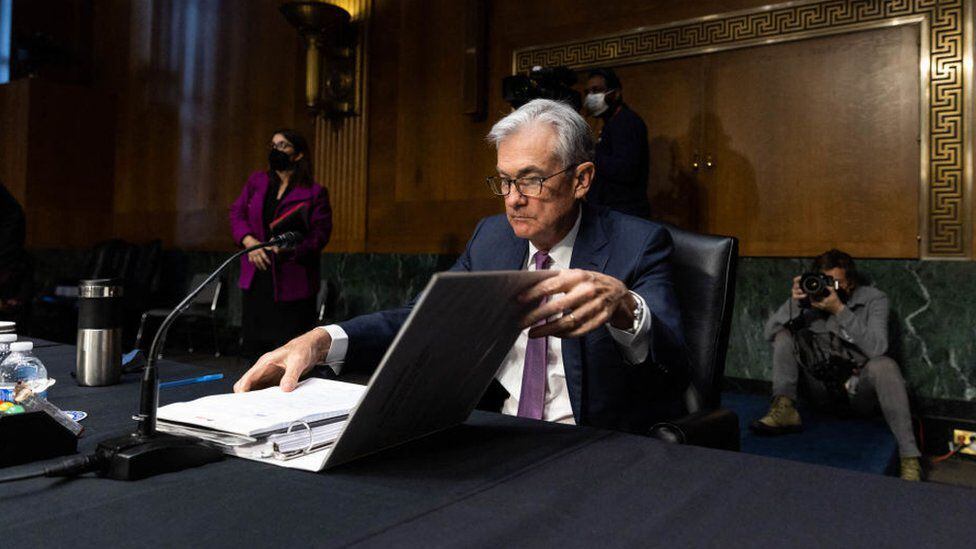
The Federal Reserve is in a deep self-made hole as its top policy committee meets this week to announce the start of a long-awaited cycle of interest rate hikes.
Inflation is at its highest point in 40 years and continues to accelerate, the Fed’s credibility in fighting inflation is damaged and it has lost control of the monetary policy narrative.
If we add to this the new set of uncertainties facing the world economy due to the Russian invasion of Ukraine, it should come as no surprise that the members of the Federal Open Market Committee (FOMC) have expressed divergent views in the run-up to its deliberations.
Keeping the FOMC together is a difficult challenge for Chairman Jerome Powell. However, he pales in comparison to the importance of making the right choice among less than ideal policy options.
The multiple headaches of the Fed, as important as they are, do not end there. I suspect he will also face fresh criticism regardless of what he decides this week. Understanding why is critical to illustrating the considerable uncertainty facing global politics and the economy, exacerbated by the tragedy in Ukraine.
A menu of suboptimal options is often associated with policy making, such as that of the current Fed, which has fallen woefully behind events on the ground, especially if citizens are directly harmed, as it happens to many today with price increases.
The political dilemma of the central bank is particularly serious. Being far from the world of the first and best political responses – for this, the fed should, and could, have started to ease off the stimulus accelerator last summer, as some of us advocate—the central bank’s options are far from simple and satisfactory.
Just consider the two main Fed policy alternatives.
With the mandate ofmaximum employment” fulfilled, according to the Fed officials themselves – although with the level of labor force participation still too low – the central bank could dedicate itself fully to inflation.
By taking bold action up front, you’d minimize the risk of unanchored expectations joining an existing set that’s already driving inflation (from rising commodity prices and rising wages to cutting jobs). supply chains and high transportation costs). This would imply starting the cycle of rate hikes with a hike of at least 50 basis points—indicating that an aggressive set of hikes will follow—and starting the balance sheet reduction in the next two months.
This approach would allow the fed regain some of its credibility in the fight against inflation and have a better control of the political narrative. Just say “part” because the markets would still have to see the follow-up, having seen the fed misclassify inflation astransient” until the end of November, continue to miss his inflation estimates, repeatedly revise projections (which he will still have to do again this week), and, absurd as it sounds given how high inflation has been for many months, wait until last week to completely stop its emergency liquidity injections.
The problem with this approach is that it risks sending the US economy into a recession. It is not a risk that should be ignored, especially considering that the most vulnerable segments of the population would be the most affected. Having already experienced a significant erosion of purchasing power due to significantly higher food and gasoline prices, they may now face both the fear and the reality of further income losses.
The other option is a cycle of “moderate hardening”.
In this scenario, the fed It would raise rates by just 25 basis points on Wednesday, leave its future policy guidance largely vague and retain flexibility on how and when it will start cutting its bloated $9 trillion balance sheet.
Once again, this is not a very attractive political option. It would do little to curb inflation expectations, increasing the likelihood that workers and businesses will try to more fully offset past price increases and also begin to take precautionary steps to hedge against future inflation.
Although it is especially difficult to predict with certainty what the Fed will ultimately do, I am inclined to think that it could opt for some perceived middle ground that is more in favor of attempting moderate tightening.
Specifically, a 25 basis point increase would be accompanied by very conditional language about what comes next, as the central bank seeks to maintain maximum policy flexibility on both rates and the balance sheet.
This may be attractive to some as “do something about inflation”, while limiting the immediate contractionary impulse of monetary policy and causing less indigestion to the markets. But this would not be free. It would entail a greater risk of financial and price instability in the future and, with it, risks for the real economy.
The only certainty in this is that, even after the FOMC meeting wraps up on Wednesday, the Fed will still find itself in the deepest hole it has dug itself.
Source: Gestion
Ricardo is a renowned author and journalist, known for his exceptional writing on top-news stories. He currently works as a writer at the 247 News Agency, where he is known for his ability to deliver breaking news and insightful analysis on the most pressing issues of the day.












